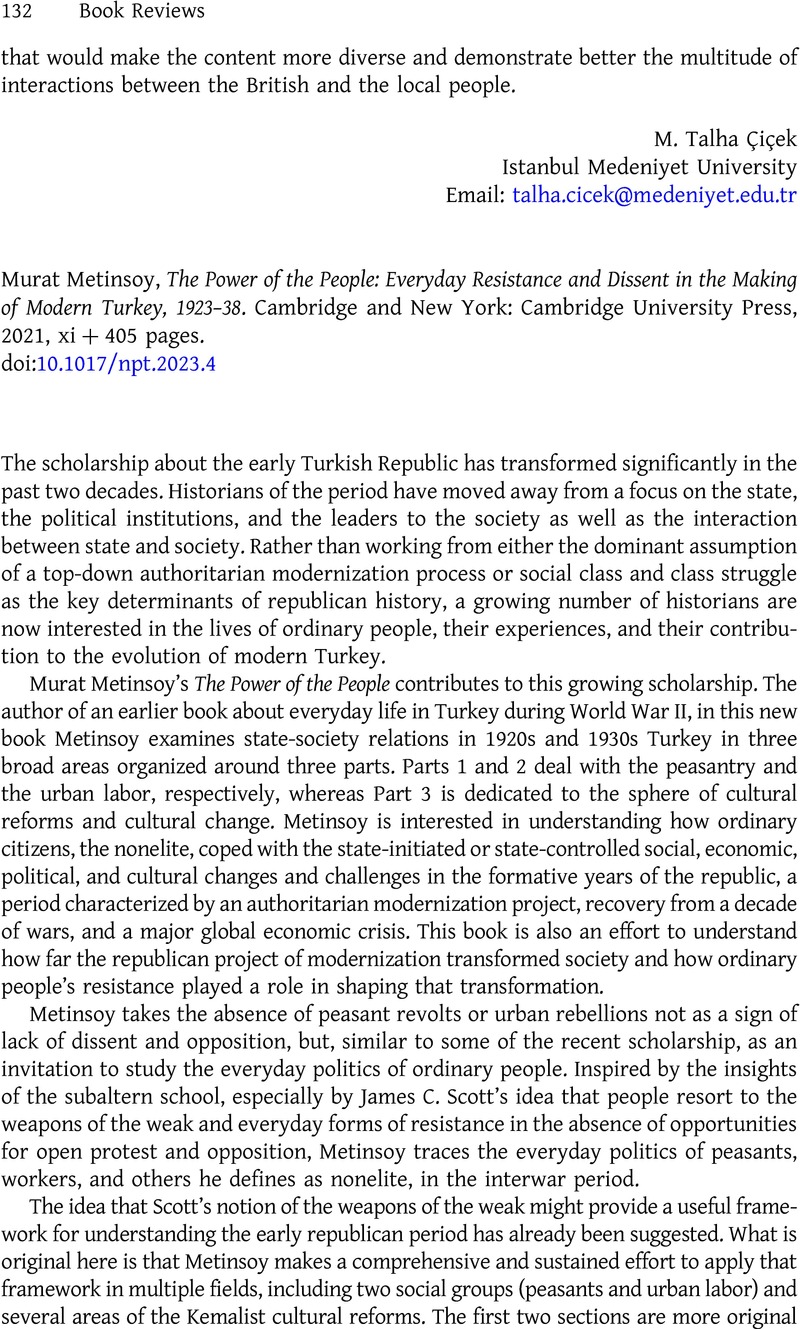No CrossRef data available.
Article contents
Murat Metinsoy, The Power of the People: Everyday Resistance and Dissent in the Making of Modern Turkey, 1923–38. Cambridge and New York: Cambridge University Press, 2021, xi + 405 pages.
Review products
Murat Metinsoy, The Power of the People: Everyday Resistance and Dissent in the Making of Modern Turkey, 1923–38. Cambridge and New York: Cambridge University Press, 2021, xi + 405 pages.
Published online by Cambridge University Press: 06 March 2023
Abstract
An abstract is not available for this content so a preview has been provided. Please use the Get access link above for information on how to access this content.

- Type
- Book Review
- Information
- Copyright
- © The Author(s), 2023. Published by Cambridge University Press



